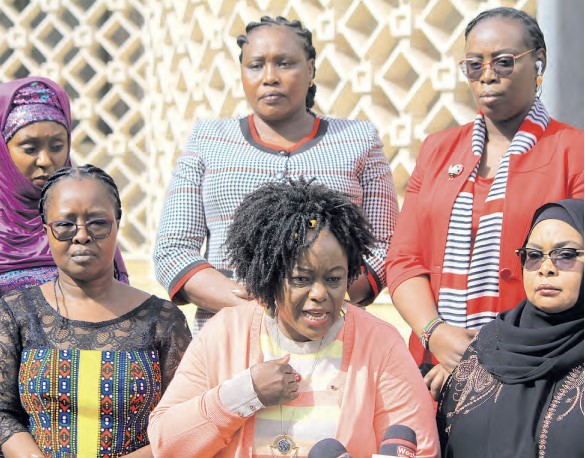
Kenya’s constitution establishes a comprehensive framework for affirmative action, aimed at addressing historical injustices and promoting social inclusion.
Whether through creating role models, ensuring political representation, or providing corrective measures for past discrimination, affirmative action plays a vital role in levelling the playing field for marginalised groups.
Constitutional Foundations of Affirmative Action is firmly rooted in key provisions of the Constitution, which seek to remedy historical injustices and promote equality.
Article 27( 6 ) directs the state to implement affirmative action measures to redress disadvantages caused by past discrimination.
Beyond addressing past wrongs, the constitution envisions affirmative action as a tool to promote inclusive participation and provide equal opportunities for marginalised groups, including women, persons with disabilities and ethnic minorities.
Although the Constitution guarantees equal access to opportunities for everyone in Articles 27( 1 ) and ( 3 ), this alone is not enough to achieve true equality in everyday life.
Equal treatment alone overlooks the enduring legacies of past discrimination, social exclusion and systemic barriers, which continue to obstruct the full participation of marginalised groups in society.
These obstacles stem from deeply ingrained social stereotypes, structural disadvantages and limited access to primary resources, political power and opportunities.
Affirmative action plays a crucial role in breaking these cycles of exclusion by creating visible role models from underrepresented groups.
As equality law expert, Prof Sandra Fredman notes, role models challenge stereotypes and foster the self-confidence necessary for marginalised individuals to pursue leadership roles and careers previously deemed unattainable.
The case of women’s representation in leadership highlights how affirmative action measures have been essential in challenging societal norms.
Patriarchal beliefs have historically imposed restrictive gender roles that limit women’s aspirations, particularly in male-dominated fields such as politics.
These stereotypes often celebrate traits such as demureness and timidity in women, while devaluing boldness and assertiveness.
As a result, generations of women have absorbed limiting beliefs about their capabilities, resulting in underrepresentation in political leadership.
Women make up almost 51 per cent of the population.
However, although the gender gap in education has narrowed, women’s political representation remained low before the implementation of gender quotas in the 2010 Constitution.
Since the introduction of these quotas in 2013, however, women’s representation in Parliament has increased significantly, rising from 9.82 per cent before 2010 to 23.43 per cent after the 2022 general election.
This progress emphasises the transformative impact of affirmative action in encouraging women to challenge societal norms and pursue leadership roles.
The example of women’s increasing political representation demonstrates how affirmative action not only improves gender equality but also helps dismantle long-standing societal barriers that restrict women’s potential.
Personal observations on gender disparities
During a recent review of postgraduate study and scholarship applications, I observed two key patterns that further demonstrate the persistence of gender disparities.
First, there was a noticeable difference in the language used in recommendation letters for female versus male applicants.
Reference letters for female candidates often emphasise interpersonal skills and qualities such as humility, politeness, and professionalism in both dress and demeanour. Some women were specifically described as ‘humble’, ‘well-mannered’, and ‘a wonderful girl’, with less focus on their academic achievements.
In contrast, letters for male applicants were filled with bold praise, using superlatives like ‘brilliant’, ‘exceptional’, ‘self-motivated’, and ‘intellectually curious’, highlighting their intellectual capabilities.
Although there are occasional exceptions, the disparity in language makes it clear who is more likely to be shortlisted when recommendation letters weigh heavily in the decision.
This reveals how ingrained social perceptions about gender can influence decision-making processes and hinder women’s opportunities.
The second observation relates to the advantage enjoyed by applicants from more affluent backgrounds.
Those who attended well-funded schools, or had strong mentors, were better able to present themselves, frame their accomplishments, and meet the expectations of reviewers.
This advantage highlights the importance of role models and mentorship in shaping peoples’ career paths.
The presence of strong role models, as envisioned by the constitution, empowers individuals from marginalised backgrounds to compete on equal footing, providing a fairer playing field.
The role of social inclusion in affirmative action
Social inclusion is recognised as a core aim of affirmative action under the constitution.
Social exclusion is often tied to unequal power dynamics, resulting in marginalisation, poverty and deprivation.
Ethnic minorities, persons with disabilities and other marginalised groups, frequently face exclusion from education, employment and political participation.
Affirmative action measures that guarantee representation for these groups aim to correct imbalances and promote social justice.
Moreover, social inclusion not only seeks to address past discrimination but also fosters a more harmonious and integrated society.
True societal progress can only be achieved when all citizens, including marginalised groups, are fully able to participate in governance (Centre for Rights Education and Awareness (CREAW) v Attorney General [2015] eKLR).
In this vein, beyond fair competition and merit, Article 232 of the constitution emphasizes values such as diversity, regional and ethnic balance, and the need to provide equal opportunities in public service appointments for men and women members of all ethnic groups, and persons with disabilities.
This affirmative action measure thus ensures all candidates are both competent and suitable for appointment, while also considering broader social inclusivity requirements.
This thoughtful approach to social inclusion masterfully addresses the systemic exclusion of certain groups from political, social, and economic participation. One of the significant challenges of affirmative action lies in identifying its beneficiaries.
The principle of genuine need, as outlined in Article 27( 7 ) of the constitution, mandates that affirmative action should benefit only those within disadvantaged groups who truly require assistance.
This principle addresses concerns of over-inclusiveness — where individuals within a designated vulnerable group may not actually be disadvantaged — and under-inclusiveness, where individuals facing genuine disadvantage might fall outside the specified beneficiary categories.
A key example of the importance of genuine need can be seen in the context of education bursaries.
A well-off student from a marginalised region who attended a private school may not qualify for an affirmative action programme targeting less privileged students from public schools in that region.
This principle was inspired by the ‘creamy layer’ concept developed by Indian courts, which excludes economically or socially advanced members of disadvantaged groups from benefiting from material affirmative action measures.
By targeting only those who truly need assistance, affirmative action ensures resources are directed to individuals who are genuinely disadvantaged.
Interpretations of genuine need
Professor Christina Murray, a key figure in drafting the 2010 Constitution, identifies three interpretations of genuine need in the context of affirmative action.
The first interpretation aligns with the ‘creamy layer’ concept, focusing on economic or material disadvantage as the criterion for eligibility.
The second interpretation expands the genuine need to include social needs, such as enhancing the representation of marginalised groups, even if these individuals are not economically disadvantaged.
This approach recognises the broader social objectives of affirmative action, such as promoting diversity in Parliament or the Judiciary.
Lastly, the third interpretation suggests that the government must ensure that any affirmative action programme is genuinely needed, establishing a rigorous threshold for justification.
Conclusion
By fostering representation and creating role models, constitution’s comprehensive framework for affirmative action helps marginalised groups overcome ingrained societal barriers.
While identifying beneficiaries remains a challenge, the principle of genuine need ensures resources and opportunities are directed to those who require them.
The writer is an
advocate of the
High Court of
Kenya and a Knight
Fellow in Legal
and Constitutional
Research at the
University of St
Andrews. She
is the author of
Equality in Kenya’s
2010 Constitution:
Understanding
the Competing
and Interrelated
Conceptions (Hart
Publishing, 2021)















